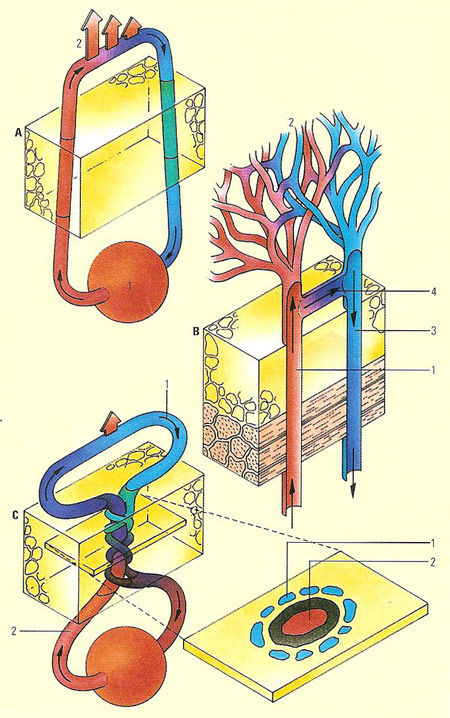homeotherm

A homeotherm, also called an endotherm, is an organism, such as a mammal or bird, which is able to maintain its body temperature within a narrow range, usually above that of its surroundings, despite large variations in environmental temperature. Homeothermy, or warm-bloodedness, may be maintained continually or for limited periods only.
Mammals maintain a constant body temperature of, usually, about 37°C (98.6°F) by generating metabolic heat. In the cold, heat loss is reduced by a layer of insulating fur or blubber (fatty tissues), but temperature is further regulated by the circulatory system. A simple heat exchanger (A) dissipates internal heat (1) to the outside (2), but most mammals have more complex systems (B). The warm blood in an artery (1) branches out into capillaries, where heat is lost through the skin (2). Cooled blood returns through the veins (3). Heat loss can be minimized by diverting warm blood through transverse blood vessels. Some mammals, like whales, that live in very cold climates have counter-current heat exchange systems (C) that further reduce heat loss. A vein returning cold blood (1) divides and surrounds an artery (2). The arterial blood warms up the venous blood – lessening the shock it might cause to the major organs – and is in its turn cooled down so that less body heat is lost to the surface.
Compare with poikilotherm.


